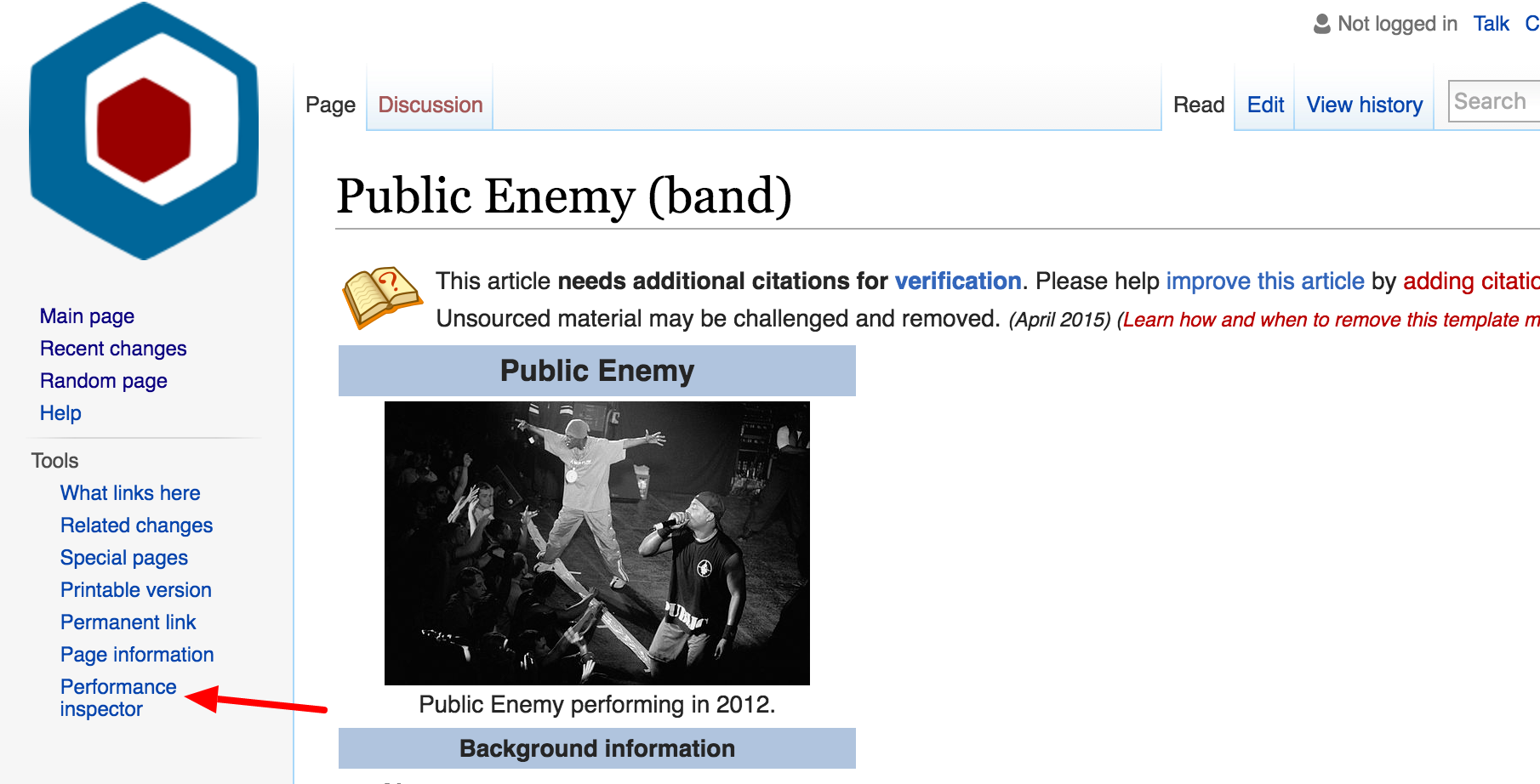Project Information
- Name of tool/project: PerformanceInspector
- Project home page: https://www.mediawiki.org/wiki/Extension:PerformanceInspector
- Name of team requesting review: Performance-Team
- Primary contact: @Peter
- Target date for deployment: "as soon as it's ready", July/August 2016?
- Link to code repository / patchset: https://gerrit.wikimedia.org/r/p/mediawiki/extensions/PerformanceInspector
- Programming Language(s) Used: Javascript, PHP.
Description of the tool/project
The Performance inspector is an extension to help editors to find potential performance problems on specific articles. The first initial release will help editors to find too large images and potential too many/large modules. It will also setup the a pattern/structure for us to add more performance related information to the user in coming versions (see T117411).
Description of how the tool will be used at WMF
The tool is made for technical power editors to find potential performance problems themselves.
Dependencies
List dependencies, or upstream projects that this project relies on
- The extension uses the mediawiki bundled Mustache (https://mustache.github.io/)
Has this project been reviewed before?
No.
Working test environment
None yet but you can test it using the Vagrant setup you can enable the role performanceinspector: vagrant roles enable performanceinspector
Click in the menu item "Performance Inspector" to activate
